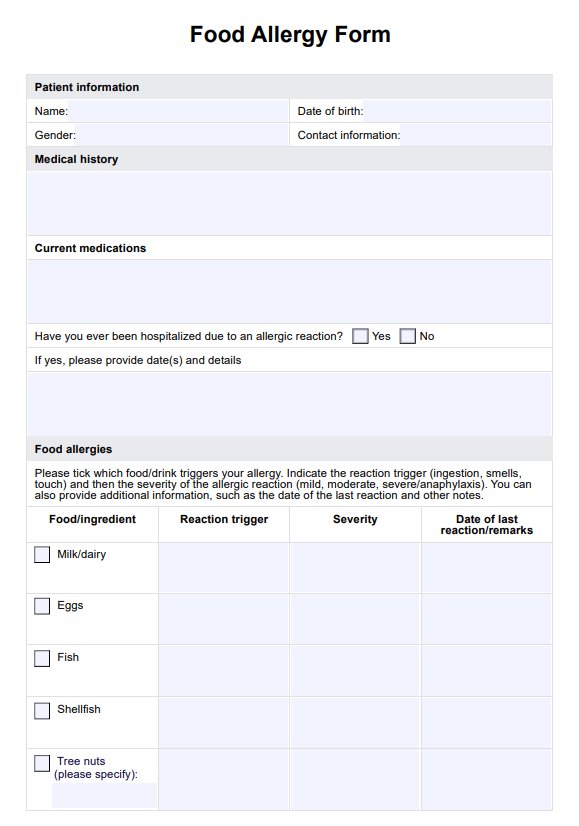Usually, the person with the allergy fills it out. If the person with the allergy is a child or is physically incapable of filling it out, their parents, siblings, loved ones, friends, caregivers, guardians, or a nurse can fill it out on their behalf. If the form is handed to a healthcare professional, they will keep a copy for documentation.

Food Allergy Form
Use our Food Allergy Form to gather comprehensive food allergy information to properly respond to your patient's allergic reaction.
Food Allergy Form Template
Commonly asked questions
Food allergies form when the immune system mistakenly identifies a normally harmless food protein as a threat, leading to an inappropriate immune response. This response involves the production of immunoglobulin E (IgE) antibodies specific to the allergen, which trigger the release of chemicals like histamine upon subsequent exposure to the food. This results in allergy symptoms that can range from mild to severe, including anaphylaxis.
Allergens trigger allergies, including proteins from foods, pollens, dust, and animal dander. When susceptible individuals encounter an allergen, their immune system overreacts, producing IgE antibodies that bind to mast cells. Upon re-exposure to the same allergen, these antibodies activate the mast cells to release histamine and other inflammatory substances, causing various symptoms.
EHR and practice management software
Get started for free
*No credit card required
Free
$0/usd
Unlimited clients
Telehealth
1GB of storage
Client portal text
Automated billing and online payments











